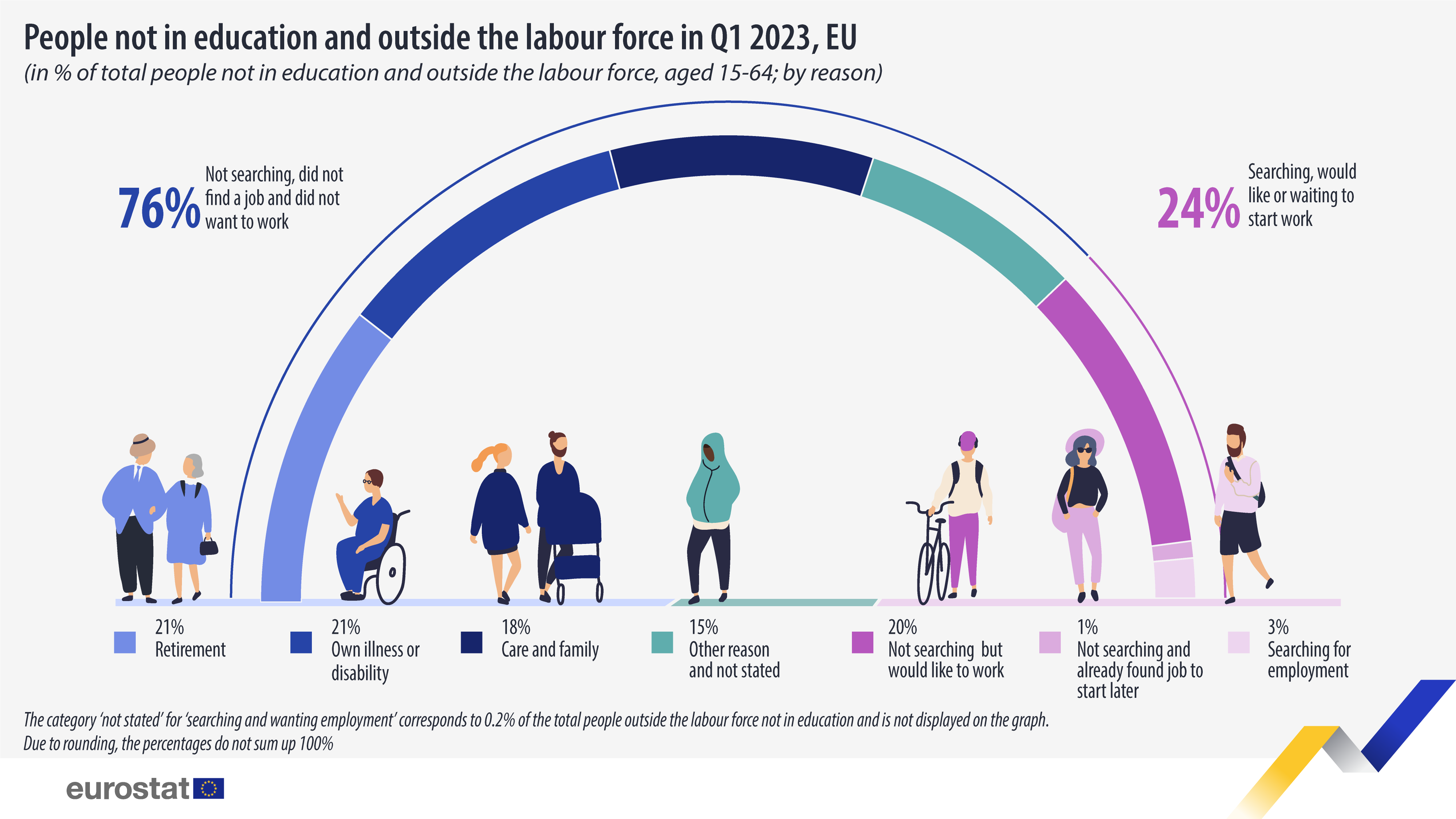People not studying and outside the labour force: 18%
In the first quarter of 2023, among people aged 15-64 who were not in education, slightly more than 8 in 10 were in the labour force (81.8%). From this total, 76.7% were employed and 5.1% were unemployed. On the other side, 18.2% were outside the labour force in the EU.
Among EU countries, Romania and Italy registered the highest share of people outside the labour force among those not in education in the first quarter of 2023, with 25.8% and 25.6%, respectively. These countries were followed by Greece (22.8%), Croatia (21.8%) and Belgium (19.6%).
On the other hand, the lowest shares were registered in Sweden (8.3%), Estonia (12.3%) and Czechia (13.6%).
Source dataset: LFS ad-hoc extraction
According to the EU Labour Force Survey (EU-LFS), of the 44 million people not in education and outside the labour force in Q1 2023, 75.5% were not searching for a job, had not found a job and did not want to work; 20.3% were not searching but nevertheless wanted to work; 2.8% were actively searching but not immediately available, and; 1.2% were not searching but had found a job to start later.
Among people not in education and outside the labour force, 21.1% did not want to work because they were retired, another 20.7% because of illness or disability, and 18.2% because of care responsibilities or other family reasons.
Source dataset: LFS ad-hoc extraction
For more information
- Statistics Explained article on Key figures on the changes to the labour market
- Database on employment and unemployment (LFS)
- Thematic section on the Labour Force Survey
Methodological notes
- A person is outside the labour force if they are not part of the labour force, meaning they are neither employed nor unemployed.
- Participation in education: participation in formal education and training (student or apprentice) in the last 4 weeks.
- Due to rounding, the percentages may not sum up to 100%.
If you have any queries, please visit our contact us page.

